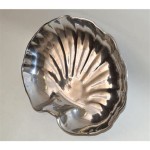Installing Farm Sink In Existing Cabinet
The installation of a farm sink in an existing cabinet requires careful planning and precise execution to ensure a seamless and functional outcome. Several essential aspects must be considered to achieve a successful installation, including the cabinet's suitability, proper sink selection, meticulous measurements, precision cutting, secure mounting, and meticulous sealing.
This comprehensive guide will delve into each of these crucial aspects, providing detailed instructions and valuable tips to assist homeowners and contractors alike in navigating the process of installing a farm sink in an existing cabinet. By adhering to these guidelines, you can ensure a successful installation that enhances the aesthetics and functionality of your kitchen space.
Cabinet Suitability:
Before embarking on the installation process, it is imperative to ascertain the suitability of your existing cabinet. Ensure that the cabinet is constructed of durable materials capable of withstanding the weight of the farm sink and its contents. Additionally, verify that the cabinet's dimensions are compatible with the desired sink size and configuration. If modifications to the cabinet are necessary, seek professional assistance to ensure structural integrity.
Proper Sink Selection:
Selecting the appropriate farm sink is crucial for both aesthetic appeal and functionality. Consider the desired material, size, and configuration to complement the existing kitchen décor and accommodate your specific needs. Opt for a sink with adequate depth and basin size to suit your daily tasks and preferences. Additionally, consider the sink's mounting style (undermount or topmount) to ensure compatibility with your cabinet and countertop.
Meticulous Measurements:
Precise measurements are essential for a successful installation. Measure the cabinet's interior dimensions, including width, depth, and height. Transfer these measurements to the countertop or sink base template provided with the sink. Mark the cutting lines meticulously to ensure an accurate fit.
Precision Cutting:
Using a jigsaw or reciprocating saw, carefully cut the countertop or sink base along the marked lines. Ensure clean and precise cuts to prevent uneven edges or gaps. If necessary, sand the cut edges to smooth any rough surfaces.
Secure Mounting:
Position the sink into the cutout and secure it according to the manufacturer's instructions. Typically, this involves using mounting brackets or clips to firmly attach the sink to the cabinet and countertop. Ensure the sink is level and stable before proceeding with further steps.
Meticulous Sealing:
To prevent water damage and maintain the integrity of the installation, apply a generous bead of silicone caulk around the perimeter of the sink, where it meets the countertop. Use a damp cloth or sponge to smooth the caulk and remove any excess.

Retrofit Farm Sink In Existing Cabinet By Rachiele Patented Design

Installing An Farmhouse Sink In Existing Cabinet

How To Install An Apron Sink In A Stock Cabinet Pneumatic Addict

How To Add An Apron Front Sink Existing Granite Counters Noting Grace

Retrofit Farm Sink Installation In Existing Cabinetry By Rachiele

My So Called Diy Blog Resize Your Existing Cabinet And Doors To Fit An Apron Front Sink Kitchen Farmhouse Installation

Fireclay Farmhouse Kitchen Sink Installation Guide
The Best Retrofit Farmhouse Sinks For Your Kitchen Trubuild Construction

How To Add An Apron Front Sink Existing Granite Counters Noting Grace

Farmhouse Sink Installation Easy Diy Top Mount Do Dodson Designs








